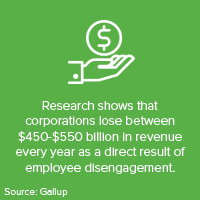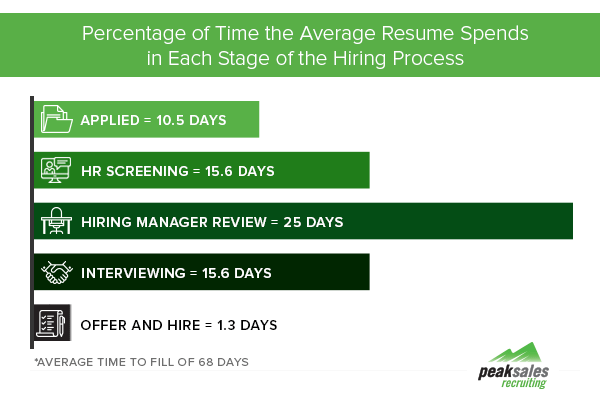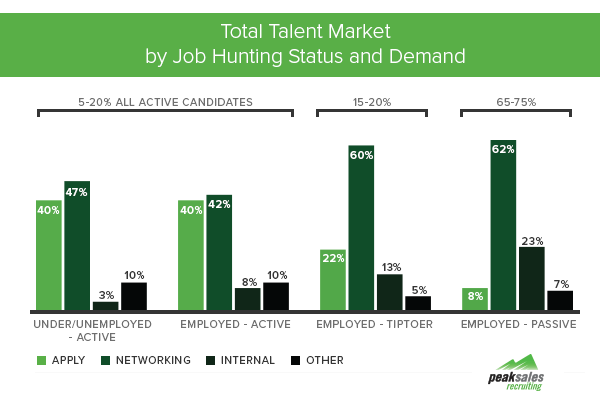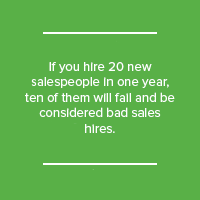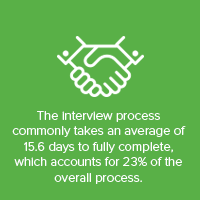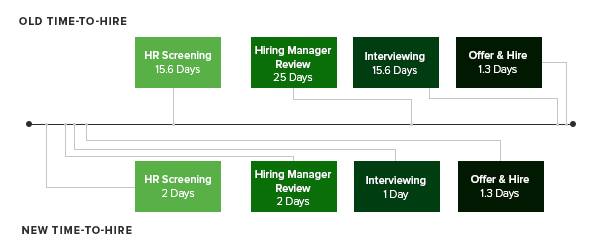
 The pressure for HR Leaders to provide organizations with top performing sales candidates in short periods of time is on the rise. B2B sales reps typically onboard over 10 months with 24 months of average tenure. It is therefore of the utmost importance to hire top salespeople quickly and retain them long-term.
The pressure for HR Leaders to provide organizations with top performing sales candidates in short periods of time is on the rise. B2B sales reps typically onboard over 10 months with 24 months of average tenure. It is therefore of the utmost importance to hire top salespeople quickly and retain them long-term.
Being responsible for the overall recruitment process of new salespeople, human resource leaders are very familiar with the negative impacts caused by the lengthy time required when hiring new sales and sales leaders. These negative impacts can include: loss of revenue & market share, decreases in sales productivity, and lowered employee morale.
In this article, we will discuss the changes human resource leaders can make in their recruitment process. These changes will counter the negative impacts of vacant sales roles and shorten time needed to hire new salespeople.
We will provide tools that can be implemented into an existing recruitment process, which will:
- Increase the pool of qualified candidates;
- Reduce time to fill;
- Improve hiring manager and candidate satisfaction rates;
- Strengthen quality of hire rates
Skip to section:
Cost of a vacant role
Improvement drivers
Identify your hiring stakeholders
Build a robust hiring plan
Eliminate boring job descriptions
Automate your screening process
Consolidate your interview process
Leverage the notice period
Download your hiring criteria worksheet
Here is your ultimate guide to reducing your time to hire:
The Cost of a Vacant Role
Does your sales leader truly understand the cost of open headcount?

For example, if you’re looking to fill a vacant Account Executive role with an annual quota of five million dollars, you will be losing 787,600 thousand dollars over the 57.5 time to hire average.
To calculate your precise revenue loss potential, use the formula below:
Brandon Naber from Flare HR states,
“We have a 10 sales rep headcount on this team. We have 9 reps hired and currently selling, 1 headcount vacant. Because of this vacancy, every rep needs to hit over 110 percent of their quota for us to hit our team revenue target. Multiply that by our 4 sales teams – that’s a multi-million revenue problem for our company. Yikes.”

Reps are often told to hunt and/or manage open territories and accounts all while tasked with delivering on their own goals and metrics.
With the average cost per turnover at 150 percent of the employee’s salary, sales and HR leaders walk a costly fine line when overloading reps that can’t sustain the necessary activity and behavior levels needed for success.
When reps aren’t set up for success, role disengagement skyrockets.
In fact, research shows that only 30 percent of US employees are actively engaged and passionate about their workplace. The remaining 70 percent are either disengaged or actively disengaged. Gallup estimates corporations lose between 450-550 billion dollars in revenue every year as a direct result of employee disengagement.
Improvement Drivers for Your Sales Recruitment Process
Understand Where Your Challenges Are in the Hiring Funnel
For HR Leaders, the challenge lies in improving team metrics like time to fill, time to hire, and time to start. The difference between these three metrics being:
Time to fill
The number of days between a job’s publication date and an accepted offer.
Time to hire
The time elapsed between engaging a candidate and them accepting an offer.
Time to start
The lag time between when a candidate accepts an offer and when they start.
To decrease your time-time-hire your team needs to have a thorough understanding of the differences between these three metrics. Understanding these nuances allows you to hone in on the areas that will have the greatest time decreases.
For example, you may find that in order to improve your time to hire, you need to decrease your interview time. If you find it takes too long for the candidate application process, then you can improve your time to fill.
Below we created a breakdown of a resume’s timeline as it goes through the stages of a recruitment process.
Top salespeople only spend an average of ten days on the market before being recruited for their next role. With organizations averaging a time to hire of 57.5 days, talent shortages are fueling hiring managers to make bad hiring decisions.
So how do you find a quality candidate while decreasing how long it takes to fill your vacant role?
Identify Your Hiring Stakeholders

HR needs to take a leadership position by identifying the stakeholders in the recruiting process. This will not only improve sales hiring speed but also quality. Depending on the size of your organization, these stakeholders can vary.
Small to midsize businesses
You could have your CEO and/or Company Owner, and Sales Leader. Again, this may vary depending on the sales team you have developed to date.
Large enterprise organizations
Depending on role seniority, you could have your HR Leader, your Sales Leader and their company peers, and your CEO. If it’s a simple Account Executive role, the recruitment process wouldn’t involve your CEO. For senior roles like VP of Sales, the CEO would typically be involved.
In your stakeholder list, include the following information:
- The stakeholders (names and titles)
- The order of their involvement in the process
- The tasks they will be responsible for
- The timelines associated with said tasks
This list is sent to all involved stakeholders to ensure they’re informed and understand what the recruitment expectations are. It is crucial they understand how important it is for the process to be time sensitive. Time can make or break the hiring of an ideal candidate.
For example:

Having this timeline expectation on the worksheet, allows you to hold them accountable and address the issue if deadlines are not met.
By using this process, you can decrease your resume review process from the 25-days to two business days.
Build a Robust Sales Hiring Plan
What is your sales hiring plan?
Most organization’s will have an established hiring plan for all roles within your organization. The best sales hiring plan’s are tied to both the corporate strategy and sales strategies, and include:
- Headcount budget (quarterly & yearly)
- Hiring stakeholders (by role)
- Advertising channels
- Hiring timelines

Prior to leveraging different sourcing channels it is imperative to create a way to objectively measure sales candidates. An effective way to do this is to create a set of mandatory hiring criteria.
These criteria lay the foundation for subsequent processes including job postings, selection, setting realistic expectations, and compensation. By establishing hiring criteria, you increase the speed and accuracy of your recruitment decisions, and in turn decrease your time to hire.
When creating your hiring criteria, establish which ones are mandatory and which are additional bonuses. These mandatory criteria consist of skills and experience you would not be willing to provide training for upon hire.
The non-mandatory criteria is a list of skills and experience that would be considered an added benefit but would not negatively impact the candidate’s potential success.
Eliot Burdett, CEO of Peak Sales Recruiting, states
“Rank your “must-have” and “desirable” attributes. Be mindful when creating the list, as too many filters will result in a restricted pool of candidates. Too few requirements will increase the pool but can leave you with a load of bad matches. Refer to this list when reviewing resumes and during interviews. This will make the selection process easier. A candidate with all “desirable” factors will not make the cut compared to the applicant with a list of “must-have” attributes.”
According to Forbes, to hire a quality salesperson for your organization you must establish your company’s vision and goals. Then find candidates who meet and solve the challenges specific to your organization. By establishing these challenges early on, you will avoid time wasted on unfit sales candidates.
To help you create your own hiring criteria we have included a worksheet for you to follow. Download it here.
Upon completing your mandatory hiring criteria you can refocus your energies to pursuing candidates through your most successful channels.
Since 62 percent of all passive candidates, who are presently employed and successful in their roles, obtain new roles through networking, it is critical to leverage your current top performers’ networks to find additional top performers more efficiently.
Research demonstrates that by leveraging Employee Referral Programs (ERP), you can drastically decrease your time to start. Referral candidates typically begin their roles 58 percent quicker than those found on job boards and career sites.
With the average employee having more than 150 contacts on their social media networks, you can easily add this channel into your hiring strategy and begin tapping into your employee’s networks before pursuing other acquisition tactics like posting job ads.
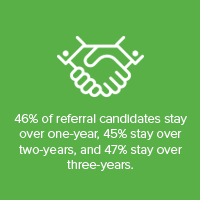
Choosing a reward for employees who participate in your ERP depends on what you think their top motivator is. With companies finding 40-60 percent of their hires through ERPs, monetary rewards tend to gain the most employee attention.
Google, for example, pays two thousand dollars for an employee referral, and has doubled this reward for further encouragement. However, what motivates Google employees to provide referrals is due to the fact that they enjoy where they work. This enjoyment has driven them to recommend other people to join their positive environment.
Build Your Virtual Bench
What do you do if someone leaves the company unexpectedly?

With 65-75 percent of candidates today being passive, it can take many months to build relationships and persuade top performers to join your organization. During this time, you have to educate them on your future strategies while also learning about their careers goals.
This process takes great effort, especially while under the pressures of providing top salespeople to your internal stakeholders fast. Having a plan in place is one that would eliminate this pressure while also meeting the recruitment timeline expectations of your stakeholders.
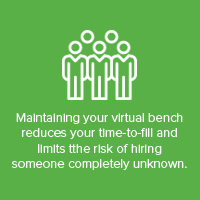
This concept is no different when it comes to sales. Top quality players take the time to decide where they would like to take their career. They want to know that their next move is in line with their long-term goals. Having a virtual bench of A-Player salespeople you are constantly nurturing, gives you an edge with both time and your ability to beat your competition.
Your virtual bench should consist of 10 prospective candidates who you are reaching out to regularly to build relationships. These candidates should then become people you can contact to potentially join your company at any time.
Your bench should also contain ten influencers who may not want to join your company but can recommend a top performing salesperson to you at the drop of a hat.
By maintaining and effectively utilizing your virtual bench, you are eliminating the 10.5 days it takes for the candidate application process. As a result , you decrease your overall time to fill by 15 percent.
Eliminate Boring Job Descriptions & Replace with Career Opportunities
What are the makings of a job description that will attract and engage the right candidates?

While you want to ensure that the prospective candidates meet all the requirements and can complete the necessary selling tasks, the goal of your job description is to captivate the prospective candidate by illustrating the career opportunity they can’t afford to miss.
Some simple ways to improve your job descriptions include:
- Devise an EVP (employee value proposition) explaining how this new role would be a step up, versus a lateral move, to someone who is already doing similar work.
- Instead of creating a list of mandatory skills and experience, which may cause top performers to opt out of the application process, make it a list of performance objectives for their first three months, six months, 12 months, and beyond. This will allow the prospect to visualize themselves completing these tasks and begin thinking about their strategies.
- Include a section focusing on the benefits of working for your organization. How are you different from other organizations of a similar size and industry? You can do this by conducting a simple survey with your current employees to discover their favorite reasons behind working at your organization. Some anonymous survey tools you could use include:

- Describe potential opportunities for advancement. This information will entice candidates to apply and pursue the role since they know they can progress and be part of an organization long-term.
Your job description is the first phase in your employee experience and is of the utmost importance. Your first impression with these top performing candidates is just as important as their first impression with you.
Many companies are taking their job descriptions beyond the traditional word document or PDF and are leveraging emerging technology.

SAP have begun using cartoons and video games to portray what life at their company is like. In fact, statistics show that job postings on Facebook that feature video get 36 percent more applications.
To help you create an enticing job description, we have created several templates for you to follow:
- VP of Sales Job Description Template
- Sales Manager Job Description Template
- Account Executive Job Description Template
- Sales Engineer Job Description Template
Automate Your Initial Screening Process
The initial screening process typically takes 15.6 days but there are tools you can harness to decrease this time. These tools also mitigate hiring biases, which can cause you to overlook top performers and make costly mis-hires.

These tests are objective, data-driven ways of evaluating your prospective candidate’s potential success in the role without lengthy human-to-human interaction.
Some of the most innovative ideas on the market today include cognitive technologies such as artificial intelligence (AI). For example, Olivia, is an AI software that moves candidates through an application process with sequenced questions. It automatically eliminates unqualified candidates and reduces the candidate screening time.
One company in particular, Ericsson, has taken their recruiting process one step further and has implemented a stage called “Candidate Care.” After applying and being screened for a role, unsuccessful candidates will receive an invitation letter to take advantage of the job placement portal.

After implementing the automation process, human resources reviews the candidates the automation software has deemed as the top performers. They’re submitted to the next stakeholder with the 48 hour timeline expectation, which you established in the stakeholder worksheet.
Since computers are screening candidates based on objective measures, hiring managers avoid potential biases that come with person-to-person screenings. According to Business Insider, the risks of hiring based on gut feeling is high, with a 50 percent failure rate.
Therefore, if you hire 20 new salespeople in one year, ten of them will fail and be considered bad sales hires.
Here are the top three reasons why you should never hire on “gut” feeling:
- The costs, both direct and indirect, of a poor sales hire, are astronomical.
- The “gut” is an emotional response. The person in front of you may bring to mind someone you used to know, and this may spell a positive or negative ‘gut’ reaction that has nothing to do with the candidate’s qualifications. Even in an all day interview, it is impossible to thoroughly get to know a person. It is natural to use our own internal picture, our gut, of who this person is to fill in the blanks.
- Salespeople are very skilled at making good first impressions.
Our gut reaction is not an avoidable factor. It is always there but it must be tempered with our brain. The next time you feel yourself falling prey to basing a decision on gut, ask yourself if you have the proof required to hire this individual.
For more information on how to find top performing sales people, download Sales Recruiting 2.0.
Additional Benefits To Automating Your Screening Process:
Flexibility and Efficiency
Candidates can go through the screening process at any time. Scheduling and planning is not necessary, and it is available to them 24 hours a day. You are typically capable of turning the screening system on and off, while controlling how many applicants you accept.
Customization
You can incorporate your mandatory hiring criteria, which you established via the worksheet above, for additional customization.
Candidate Tracking
You can analyze the candidate data at your leisure and track the candidate information to keep for future roles.

Consolidate Your Interview Process

The interview process commonly takes 15.6 days, which accounts for 23 percent of the overall recruiting process. But employers that consolidate this process can reduce their interview time by 156 percent.
An effective way to consolidate your interview process is to schedule all in-person interviews on the same day. Simply provide your candidates with the date their interview will take place and one or two time options. This allows them to choose a time that works best or rearrange their schedule to fit the best time.
Some technologies you could use for interview scheduling include:


The odd candidate may be unable to come in on the day you have specified. Depending on if the candidate is active or passive, you may choose to find a day that fits both your schedules. If you’ve analyzed their screening results and determine they are a top performer, then bringing them in on a different day is to your benefit.
By conducting all your interviews on the same day, you can conduct a thorough apples-to-apples comparison while the information is fresh in your mind. You also decrease your interview process from the average 15.6 days to one day.
Leverage The Notice Period

There are many factors that impact a salesperson’s notice period, such as:
- Not wanting to burn bridges
- Needing to find and train someone to replace them
- Being on the verge of closing a large deal
- Wanting to wait to get paid their commission.
It is important to be conscious of these possibilities and maximize the time you have before they officially come onboard.

Lastly, you can request some additional time outside of regular work hours to have one-on-one meetings to begin the onboarding process. You can use this time to sign paperwork, introduce them to clients, attend team building activities or anything else you deem as part of your onboarding process*.
*Note – these activities may count as active employment. Please abide by your local laws and employment standards.
Doing The Math
After taking the time to review your process and gather a thorough understanding of where you can benefit from time decreases, you have the potential to decrease your time to hire by an astounding 91 percent simply by implementing some effective tools and making minor changes.
How did we arrive at this number?
Based on the graph provided in the “Understand Where Your Challenges Are” section of this article we have established the resume timeline during an average time to hire, which is 57.5 days. Looking back on all the tools and strategies we suggested for implementation, we have been able to decrease each stage and as a result, decrease the average time to hire to 6.3 days.
(You can also calculate your new time to fill average by adding in the “application stage”, which takes an average of 10.5 days. By leveraging your network and nurturing your virtual bench, you can eliminate the time needed to post job ads and wait for applications altogether.)
By implementing these tactics and tools, you will deliver your internal stakeholders better sales candidates, faster.
relpost-thumb-wrapper
close relpost-thumb-wrapper
Eliot Burdett
Eliot received his B. Comm. from Carleton University and has been honored as a Top 40 Under 40 Award winner.
He co-authored Sales Recruiting 2.0, How to Find Top Performing Sales People, Fast and provides regular insights on sales team management and hiring on the Peak Sales Recruiting Blog.
Latest posts by Eliot Burdett (see all)
- 20 Of Our Favorite Books About Sales Management and Sales Leadership – October 20, 2023
- How To Make Progress On Your Sales Goal Without A Sales Leader – September 15, 2021
- Augment Your Recruiting Strategy During “The Great Resignation” – July 26, 2021



